-
EXECUTIVE SUMMARY 24
-
MARKET INTRODUCTION 26
-
DEFINITION 26
-
SCOPE OF THE STUDY 26
-
RESEARCH OBJECTIVE 26
-
MARKET STRUCTURE 27
-
RESEARCH METHODOLOGY 29
-
OVERVIEW 29
-
DATA FLOW 31
- Data Mining Process 31
-
PURCHASED DATABASE: 32
-
SECONDARY SOURCES: 33
- Secondary Research data flow: 35
-
PRIMARY RESEARCH: 36
- Primary Research DATA FLOW: 37
- Primary Research: Number of Interviews conducted 38
- Primary Research: Regional Coverage 38
-
APPROACHES FOR MARKET SIZE ESTIMATION: 39
- Consumption and Net Trade Approach 39
- Revenue Analysis Approach 39
-
DATA FORECASTING 40
- Data forecasting Technique 40
-
DATA MODELING 41
- Microeconomic factor analysis: 41
- Data modeling: 42
-
TEAMS AND ANALYST CONTRIBUTION 44
-
MARKET DYNAMICS 46
-
INTRODUCTION 46
-
DRIVERS 46
- INCREASING DEMAND FOR ENERGY EFFICIENCY AND COST SAVINGS 46
- GOVERNMENT REGULATIONS MANDATING THE USE OF LEDS 47
- GROWING POPULARITY OF IOT BASED SMART HOME AUTOMATION 47
-
RESTRAINTS 48
- HIGH INITIAL COST AND COMPATIBILITY ISSUES 48
- SECURITY AND PRIVACY CONCERN 49
- LACK OF AWARENESS AND UNDERSTANDING COMPLEX INSTALLATION AND SETUP 49
-
OPPORTUNITY 51
- GROWING SMART CITY PROJECTS IN DEVELOPING NATIONS TO SPUR MARKET OPPORTUNITIES 51
- HEIGHTENED CONSUMER DEMAND FOR PERSONALIZATION AND AESTHETICS 51
- RAPID TECHNOLOGICAL ADVANCEMENTS 52
-
COVID-19 IMPACT ANALYSIS 52
- IMPACT ON OVERALL ICT MARKET 52
- IMPACT ON GLOBAL SMART LIGHTING MARKET 53
- IMPACT ON SUPPLY CHAIN OF GLOBAL SMART LIGHTING MARKET 53
- IMPACT ON MARKET DEMAND OF SMART LIGHTING MARKET 53
- IMPACT ON PRICING OF SMART LIGHTING MARKET 54
-
MARKET FACTOR ANALYSIS 55
-
VALUE CHAIN ANALYSIS 55
- RAW MATERIAL SUPPLIER 55
- Technology Providers 55
- Manufacturing & ASSEMBLY 55
- Logistics and Distribution 55
- Retailers 56
- eND USERS 56
-
PORTER’S FIVE FORCES MODEL 57
- Threat of New Entrants 58
- Bargaining Power of Suppliers 58
- Threat of Substitutes 58
- Bargaining Power of Buyers 58
- intensity of Rivalry 58
-
GLOBAL SMART LIGHTING MARKET, BY INSTALLATION TYPE 60
-
OVERVIEW 60
-
NEW INSTALLATION 60
-
RETROFIT INSTALLATIONS 61
-
GLOBAL SMART LIGHTING MARKET, BY OFFERING 62
-
INTRODUCTION 62
-
HARDWARE 63
-
SOFTWARE 63
-
SERVICES 63
-
GLOBAL SMART LIGHTING MARKET, BY END USE APPLICATION 65
-
INTRODUCTION 65
-
INDOOR 66
-
OUTDOOR 66
-
GLOBAL SMART LIGHTING MARKET, BY COMMUNICATION TECHNOLOGY 67
-
INTRODUCTION 67
-
WIRED 68
-
WIRELESS 68
-
GLOBAL SMART LIGHTING MARKET, BY REGION 70
-
OVERVIEW 70
- Global SMART LIGHTING market, BY Region, 2019–2032 (USD mILLION) 70
-
NORTH AMERICA 71
- us 74
- CANADA 77
- MEXICO 80
-
EUROPE 83
- GERMANY 87
- UK 89
- FRANCE 91
- RUSSIA 93
- ITALY 96
- SPAIN 98
- REST OF EUROPE 100
-
ASIA-PACIFIC 104
- CHINA 109
- INDIA 112
- Japan 115
- South Korea 118
- Malaysia 121
- Thailand 123
- Indonesia 126
- REST OF ASIA PACIFIC 128
-
SOUTH AMERICA 131
- BRAZIL 135
- ARGENTINA 137
- REST OF SOUTH AMERICA 139
-
MIDDLE EAST & AFRICA 143
- GCC Countries 146
- South Africa 148
- REST OF MIDDLE EAST & AFRICA 151
-
COMPETITIVE LANDSCAPE 155
-
INTRODUCTION 155
-
COMPETITOR DASHBOARD 156
-
PUBLIC PLAYERS STOCK SUMMARY 157
-
COMPARATIVE ANALYSIS: KEY PLAYERS FINANICAL 157
-
COMPANY MARKET SHARE ANALYSIS, 2023 157
-
KEY DEVELOPMENTS & GROWTH STRATEGIES 159
- New Product launch/ Development 159
- Merger & Acquisition 164
- Partnership/Collaboration, Investment, Expansion, and Others 165
-
COMPANY PROFILES 167
-
CONTROL4 CORP. (SNAP ONE LLC) 167
- COMPANY OVERVIEW 167
- FINANCIAL OVERVIEW 167
- PRODUCTS Offered 168
- KEY DEVELOPMENTS 170
- SWOT ANALYSIS 170
- Key Strategies 171
-
LUTRON ELECTRONICS CO. INC. 172
- COMPANY OVERVIEW 172
- FINANCIAL OVERVIEW 173
- PRODUCTS Offered 173
- KEY DEVELOPMENTS 175
- SWOT ANALYSIS 177
- Key Strategies 177
-
SIGNIFY HOLDINGS 178
- COMPANY OVERVIEW 178
- FINANCIAL OVERVIEW 178
- PRODUCTS Offered 179
- KEY DEVELOPMENTS 182
- SWOT ANALYSIS 183
- Key Strategies 184
-
SENGLED 185
- COMPANY OVERVIEW 185
- FINANCIAL OVERVIEW 185
- PRODUCTS Offered 186
- KEY DEVELOPMENTS 187
- SWOT ANALYSIS 187
- Key Strategies 188
-
WYZE LABS INC 189
- COMPANY OVERVIEW 189
- FINANCIAL OVERVIEW 190
- PRODUCTS Offered 190
- KEY DEVELOPMENTS 191
- SWOT ANALYSIS 192
- Key Strategies 192
-
INTER IKEA HOLDING 193
- COMPANY OVERVIEW 193
- FINANCIAL OVERVIEW 193
- PRODUCTS Offered 194
- KEY DEVELOPMENTS 195
- SWOT ANALYSIS 196
- Key Strategies 197
-
ACUITY BRANDS INC. 198
- COMPANY OVERVIEW 198
- FINANCIAL OVERVIEW 198
- PRODUCTS Offered 199
- KEY DEVELOPMENTS 201
- SWOT ANALYSIS 202
- Key Strategies 202
-
HUBBELL INCORPORATED 203
- COMPANY OVERVIEW 203
- FINANCIAL OVERVIEW 204
- PRODUCTS Offered 204
- KEY DEVELOPMENTS 205
- SWOT ANALYSIS 206
- Key Strategies 206
-
CRESTRON ELECTRONICS INC. 207
- COMPANY OVERVIEW 207
- FINANCIAL OVERVIEW 207
- PRODUCTS Offered 208
- KEY DEVELOPMENTS 210
- SWOT ANALYSIS 210
- Key Strategies 211
-
INSTEON 212
- COMPANY OVERVIEW 212
- FINANCIAL OVERVIEW 212
- PRODUCTS Offered 212
- KEY DEVELOPMENTS 214
- SWOT ANALYSIS 214
- Key Strategies 214
-
EGLO LEUCHTEN GMBH 216
- COMPANY OVERVIEW 216
- FINANCIAL OVERVIEW 216
- PRODUCTS Offered 216
- KEY DEVELOPMENTS 219
- SWOT ANALYSIS 219
- Key Strategies 219
-
EVE SYSTEMS GMBH(ABB) 220
- COMPANY OVERVIEW 220
- FINANCIAL OVERVIEW 220
- PRODUCTS Offered 221
- KEY DEVELOPMENTS 222
- SWOT ANALYSIS 223
- Key Strategies 224
-
LG ELECTRONICS INC. 225
- COMPANY OVERVIEW 225
- FINANCIAL OVERVIEW 226
- PRODUCTS Offered 226
- KEY DEVELOPMENTS 227
- SWOT ANALYSIS 228
- Key Strategies 228
-
WIZ CONNECTED 229
- COMPANY OVERVIEW 229
- FINANCIAL OVERVIEW 229
- PRODUCTS Offered 231
- KEY DEVELOPMENTS 232
- SWOT ANALYSIS 233
- Key Strategies 234
-
WIPRO LIGHTING LTD 235
- Company Overview 235
- FINANCIAL OVERVIEW 236
- Products Offered 236
- KEY DEVELOPMENTS 238
- SWOT Analysis 239
- Key Strategies 240
-
LIFX(FEIT ELECTRIC) 241
- COMPANY OVERVIEW 241
- FINANCIAL OVERVIEW 241
- PRODUCTS OFFERed 242
- KEY DEVELOPMENTS 243
- SWOT ANALYSIS 243
- Key Strategies 244
-
-
LIST OF TABLES
-
QFD MODELING FOR MARKET SHARE ASSESSMENT 42
-
GLOBAL SMART LIGHTING MARKET, BY INSTALLATION TYPE, 2018-2035 (USD MILLION) 60
-
GLOBAL SMART LIGHTING MARKET, BY OFFERING, 2018-2035 (USD MILLION) 62
-
GLOBAL SMART LIGHTING MARKET, BY HARDWARE, 2018-2035 (USD MILLION) 62
-
GLOBAL SMART LIGHTING MARKET, BY SERVICES, 2018-2035 (USD MILLION) 62
-
GLOBAL SMART LIGHTING MARKET, BY END USE APPLICATION, 2018-2035 (USD MILLION) 65
-
GLOBAL SMART LIGHTING MARKET, BY INDOOR, 2018-2035 (USD MILLION) 65
-
GLOBAL SMART LIGHTING MARKET, BY OUTDOOR, 2018-2035 (USD MILLION) 65
-
GLOBAL SMART LIGHTING MARKET, BY COMMUNICATION TECHNOLOGY, 2018-2035 (USD MILLION) 67
-
GLOBAL SMART LIGHTING MARKET, BY WIRED, 2018-2035 (USD MILLION) 67
-
GLOBAL SMART LIGHTING MARKET, BY WIRELESS, 2018-2035 (USD MILLION) 68
-
GLOBAL SMART LIGHTING MARKET, BY REGION 2019–2032 (USD MILLION) 70
-
NORTH AMERICA: SMART LIGHTING MARKET, BY COUNTRY, 2018-2035 (USD MILLION) 72
-
NORTH AMERICA SMART LIGHTING MARKET, BY INSTALLATION TYPE, 2018-2035 (USD MILLION) 72
-
NORTH AMERICA SMART LIGHTING MARKET, BY OFFERING, 2018-2035 (USD MILLION) 72
-
NORTH AMERICA SMART LIGHTING MARKET, BY HARDWARE, 2018-2035 (USD MILLION) 72
-
NORTH AMERICA SMART LIGHTING MARKET, BY SERVICES, 2018-2035 (USD MILLION) 73
-
NORTH AMERICA SMART LIGHTING MARKET, BY END USE APPLICATION, 2018-2035 (USD MILLION) 73
-
NORTH AMERICA SMART LIGHTING MARKET, BY INDOOR, 2018-2035 (USD MILLION) 73
-
NORTH AMERICA SMART LIGHTING MARKET, BY OUTDOOR, 2018-2035 (USD MILLION) 73
-
NORTH AMERICA SMART LIGHTING MARKET, BY COMMUNICATION TECHNOLOGY, 2018-2035 (USD MILLION) 74
-
NORTH AMERICA SMART LIGHTING MARKET, BY WIRED, 2018-2035 (USD MILLION) 74
-
NORTH AMERICA SMART LIGHTING MARKET, BY WIRELESS, 2018-2035 (USD MILLION) 74
-
US SMART LIGHTING MARKET, BY INSTALLATION TYPE, 2018-2035 (USD MILLION) 74
-
US SMART LIGHTING MARKET, BY OFFERING, 2018-2035 (USD MILLION) 75
-
US SMART LIGHTING MARKET, BY HARDWARE, 2018-2035 (USD MILLION) 75
-
US SMART LIGHTING MARKET, BY SERVICES, 2018-2035 (USD MILLION) 75
-
US SMART LIGHTING MARKET, BY END USE APPLICATION, 2018-2035 (USD MILLION) 75
-
US SMART LIGHTING MARKET, BY INDOOR, 2018-2035 (USD MILLION) 75
-
US SMART LIGHTING MARKET, BY OUTDOOR, 2018-2035 (USD MILLION) 76
-
US SMART LIGHTING MARKET, BY COMMUNICATION TECHNOLOGY, 2018-2035 (USD MILLION) 76
-
US SMART LIGHTING MARKET, BY WIRED, 2018-2035 (USD MILLION) 76
-
US SMART LIGHTING MARKET, BY WIRELESS, 2018-2035 (USD MILLION) 76
-
CANADA SMART LIGHTING MARKET, BY INSTALLATION TYPE, 2018-2035 (USD MILLION) 77
-
CANADA SMART LIGHTING MARKET, BY OFFERING, 2018-2035 (USD MILLION) 77
-
CANADA SMART LIGHTING MARKET, BY HARDWARE, 2018-2035 (USD MILLION) 77
-
CANADA SMART LIGHTING MARKET, BY SERVICES, 2018-2035 (USD MILLION) 78
-
CANADA SMART LIGHTING MARKET, BY END USE APPLICATION, 2018-2035 (USD MILLION) 78
-
CANADA SMART LIGHTING MARKET, BY INDOOR, 2018-2035 (USD MILLION) 78
-
CANADA SMART LIGHTING MARKET, BY OUTDOOR, 2018-2035 (USD MILLION) 78
-
CANADA SMART LIGHTING MARKET, BY COMMUNICATION TECHNOLOGY, 2018-2035 (USD MILLION) 78
-
CANADA SMART LIGHTING MARKET, BY WIRED, 2018-2035 (USD MILLION) 79
-
CANADA SMART LIGHTING MARKET, BY WIRELESS, 2018-2035 (USD MILLION) 79
-
MEXICO SMART LIGHTING MARKET, BY INSTALLATION TYPE, 2018-2035 (USD MILLION) 80
-
MEXICO SMART LIGHTING MARKET, BY OFFERING, 2018-2035 (USD MILLION) 80
-
MEXICO SMART LIGHTING MARKET, BY HARDWARE, 2018-2035 (USD MILLION) 80
-
MEXICO SMART LIGHTING MARKET, BY SERVICES, 2018-2035 (USD MILLION) 80
-
MEXICO SMART LIGHTING MARKET, BY END USE APPLICATION, 2018-2035 (USD MILLION) 80
-
MEXICO SMART LIGHTING MARKET, BY INDOOR, 2018-2035 (USD MILLION) 81
-
MEXICO SMART LIGHTING MARKET, BY OUTDOOR, 2018-2035 (USD MILLION) 81
-
MEXICO SMART LIGHTING MARKET, BY COMMUNICATION TECHNOLOGY, 2018-2035 (USD MILLION) 81
-
MEXICO SMART LIGHTING MARKET, BY WIRED, 2018-2035 (USD MILLION) 81
-
MEXICO SMART LIGHTING MARKET, BY WIRELESS, 2018-2035 (USD MILLION) 82
-
EUROPE: SMART LIGHTING MARKET, BY COUNTRY, 2018-2035 (USD MILLION) 84
-
EUROPE SMART LIGHTING MARKET, BY INSTALLATION TYPE, 2018-2035 (USD MILLION) 84
-
EUROPE SMART LIGHTING MARKET, BY OFFERING, 2018-2035 (USD MILLION) 84
-
EUROPE SMART LIGHTING MARKET, BY HARDWARE, 2018-2035 (USD MILLION) 85
-
EUROPE SMART LIGHTING MARKET, BY SERVICES, 2018-2035 (USD MILLION) 85
-
EUROPE SMART LIGHTING MARKET, BY END USE APPLICATION, 2018-2035 (USD MILLION) 85
-
EUROPE SMART LIGHTING MARKET, BY INDOOR, 2018-2035 (USD MILLION) 85
-
EUROPE SMART LIGHTING MARKET, BY OUTDOOR, 2018-2035 (USD MILLION) 85
-
EUROPE SMART LIGHTING MARKET, BY COMMUNICATION TECHNOLOGY, 2018-2035 (USD MILLION) 86
-
EUROPE SMART LIGHTING MARKET, BY WIRED, 2018-2035 (USD MILLION) 86
-
EUROPE SMART LIGHTING MARKET, BY WIRELESS, 2018-2035 (USD MILLION) 86
-
GERMANY SMART LIGHTING MARKET, BY INSTALLATION TYPE, 2018-2035 (USD MILLION) 87
-
GERMANY SMART LIGHTING MARKET, BY OFFERING, 2018-2035 (USD MILLION) 87
-
GERMANY SMART LIGHTING MARKET, BY HARDWARE, 2018-2035 (USD MILLION) 87
-
GERMANY SMART LIGHTING MARKET, BY SERVICES, 2018-2035 (USD MILLION) 87
-
GERMANY SMART LIGHTING MARKET, BY END USE APPLICATION, 2018-2035 (USD MILLION) 87
-
GERMANY SMART LIGHTING MARKET, BY INDOOR, 2018-2035 (USD MILLION) 88
-
GERMANY SMART LIGHTING MARKET, BY OUTDOOR, 2018-2035 (USD MILLION) 88
-
GERMANY SMART LIGHTING MARKET, BY COMMUNICATION TECHNOLOGY, 2018-2035 (USD MILLION) 88
-
GERMANY SMART LIGHTING MARKET, BY WIRED, 2018-2035 (USD MILLION) 88
-
GERMANY SMART LIGHTING MARKET, BY WIRELESS, 2018-2035 (USD MILLION) 89
-
UK SMART LIGHTING MARKET, BY INSTALLATION TYPE, 2018-2035 (USD MILLION) 89
-
UK SMART LIGHTING MARKET, BY OFFERING, 2018-2035 (USD MILLION) 89
-
UK SMART LIGHTING MARKET, BY HARDWARE, 2018-2035 (USD MILLION) 89
-
UK SMART LIGHTING MARKET, BY SERVICES, 2018-2035 (USD MILLION) 89
-
UK SMART LIGHTING MARKET, BY END USE APPLICATION, 2018-2035 (USD MILLION) 90
-
UK SMART LIGHTING MARKET, BY INDOOR, 2018-2035 (USD MILLION) 90
-
UK SMART LIGHTING MARKET, BY OUTDOOR, 2018-2035 (USD MILLION) 90
-
UK SMART LIGHTING MARKET, BY COMMUNICATION TECHNOLOGY, 2018-2035 (USD MILLION) 90
-
UK SMART LIGHTING MARKET, BY WIRED, 2018-2035 (USD MILLION) 91
-
UK SMART LIGHTING MARKET, BY WIRELESS, 2018-2035 (USD MILLION) 91
-
FRANCE SMART LIGHTING MARKET, BY INSTALLATION TYPE, 2018-2035 (USD MILLION) 91
-
FRANCE SMART LIGHTING MARKET, BY OFFERING, 2018-2035 (USD MILLION) 91
-
FRANCE SMART LIGHTING MARKET, BY HARDWARE, 2018-2035 (USD MILLION) 92
-
FRANCE SMART LIGHTING MARKET, BY SERVICES, 2018-2035 (USD MILLION) 92
-
FRANCE SMART LIGHTING MARKET, BY END USE APPLICATION, 2018-2035 (USD MILLION) 92
-
FRANCE SMART LIGHTING MARKET, BY INDOOR, 2018-2035 (USD MILLION) 92
-
FRANCE SMART LIGHTING MARKET, BY OUTDOOR, 2018-2035 (USD MILLION) 92
-
FRANCE SMART LIGHTING MARKET, BY COMMUNICATION TECHNOLOGY, 2018-2035 (USD MILLION) 93
-
FRANCE SMART LIGHTING MARKET, BY WIRED, 2018-2035 (USD MILLION) 93
-
FRANCE SMART LIGHTING MARKET, BY WIRELESS, 2018-2035 (USD MILLION) 93
-
RUSSIA SMART LIGHTING MARKET, BY INSTALLATION TYPE, 2018-2035 (USD MILLION) 93
-
RUSSIA SMART LIGHTING MARKET, BY OFFERING, 2018-2035 (USD MILLION) 94
-
RUSSIA SMART LIGHTING MARKET, BY HARDWARE, 2018-2035 (USD MILLION) 94
-
RUSSIA SMART LIGHTING MARKET, BY SERVICES, 2018-2035 (USD MILLION) 94
-
RUSSIA SMART LIGHTING MARKET, BY END USE APPLICATION, 2018-2035 (USD MILLION) 94
-
RUSSIA SMART LIGHTING MARKET, BY INDOOR, 2018-2035 (USD MILLION) 94
-
RUSSIA SMART LIGHTING MARKET, BY OUTDOOR, 2018-2035 (USD MILLION) 95
-
RUSSIA SMART LIGHTING MARKET, BY COMMUNICATION TECHNOLOGY, 2018-2035 (USD MILLION) 95
-
RUSSIA SMART LIGHTING MARKET, BY WIRED, 2018-2035 (USD MILLION) 95
-
RUSSIA SMART LIGHTING MARKET, BY WIRELESS, 2018-2035 (USD MILLION) 95
-
ITALY SMART LIGHTING MARKET, BY INSTALLATION TYPE, 2018-2035 (USD MILLION) 96
-
ITALY SMART LIGHTING MARKET, BY OFFERING, 2018-2035 (USD MILLION) 96
-
ITALY SMART LIGHTING MARKET, BY HARDWARE, 2018-2035 (USD MILLION) 96
-
ITALY SMART LIGHTING MARKET, BY SERVICES, 2018-2035 (USD MILLION) 96
-
ITALY SMART LIGHTING MARKET, BY END USE APPLICATION, 2018-2035 (USD MILLION) 97
-
ITALY SMART LIGHTING MARKET, BY INDOOR, 2018-2035 (USD MILLION) 97
-
ITALY SMART LIGHTING MARKET, BY OUTDOOR, 2018-2035 (USD MILLION) 97
-
ITALY SMART LIGHTING MARKET, BY COMMUNICATION TECHNOLOGY, 2018-2035 (USD MILLION) 97
-
ITALY SMART LIGHTING MARKET, BY WIRED, 2018-2035 (USD MILLION) 97
-
ITALY SMART LIGHTING MARKET, BY WIRELESS, 2018-2035 (USD MILLION) 98
-
SPAIN SMART LIGHTING MARKET, BY INSTALLATION TYPE, 2018-2035 (USD MILLION) 98
-
SPAIN SMART LIGHTING MARKET, BY OFFERING, 2018-2035 (USD MILLION) 98
-
SPAIN SMART LIGHTING MARKET, BY HARDWARE, 2018-2035 (USD MILLION) 99
-
SPAIN SMART LIGHTING MARKET, BY SERVICES, 2018-2035 (USD MILLION) 99
-
SPAIN SMART LIGHTING MARKET, BY END USE APPLICATION, 2018-2035 (USD MILLION) 99
-
SPAIN SMART LIGHTING MARKET, BY INDOOR, 2018-2035 (USD MILLION) 99
-
SPAIN SMART LIGHTING MARKET, BY OUTDOOR, 2018-2035 (USD MILLION) 99
-
SPAIN SMART LIGHTING MARKET, BY COMMUNICATION TECHNOLOGY, 2018-2035 (USD MILLION) 100
-
SPAIN SMART LIGHTING MARKET, BY WIRED, 2018-2035 (USD MILLION) 100
-
SPAIN SMART LIGHTING MARKET, BY WIRELESS, 2018-2035 (USD MILLION) 100
-
REST OF EUROPE SMART LIGHTING MARKET, BY INSTALLATION TYPE, 2018-2035 (USD MILLION) 100
-
REST OF EUROPE SMART LIGHTING MARKET, BY OFFERING, 2018-2035 (USD MILLION) 101
-
REST OF EUROPE SMART LIGHTING MARKET, BY HARDWARE, 2018-2035 (USD MILLION) 101
-
REST OF EUROPE SMART LIGHTING MARKET, BY SERVICES, 2018-2035 (USD MILLION) 101
-
REST OF EUROPE SMART LIGHTING MARKET, BY END USE APPLICATION, 2018-2035 (USD MILLION) 101
-
REST OF EUROPE SMART LIGHTING MARKET, BY INDOOR, 2018-2035 (USD MILLION) 101
-
REST OF EUROPE SMART LIGHTING MARKET, BY OUTDOOR, 2018-2035 (USD MILLION) 102
-
REST OF EUROPE SMART LIGHTING MARKET, BY COMMUNICATION TECHNOLOGY, 2018-2035 (USD MILLION) 102
-
REST OF EUROPE SMART LIGHTING MARKET, BY WIRED, 2018-2035 (USD MILLION) 102
-
REST OF EUROPE SMART LIGHTING MARKET, BY WIRELESS, 2018-2035 (USD MILLION) 102
-
ASIA-PACIFIC: SMART LIGHTING MARKET, BY COUNTRY, 2018-2035 (USD MILLION) 105
-
ASIA PACIFIC SMART LIGHTING MARKET, BY INSTALLATION TYPE, 2018-2035 (USD MILLION) 105
-
ASIA PACIFIC SMART LIGHTING MARKET, BY OFFERING, 2018-2035 (USD MILLION) 105
-
ASIA PACIFIC SMART LIGHTING MARKET, BY HARDWARE, 2018-2035 (USD MILLION) 106
-
ASIA PACIFIC SMART LIGHTING MARKET, BY SERVICES, 2018-2035 (USD MILLION) 106
-
ASIA PACIFIC SMART LIGHTING MARKET, BY END USE APPLICATION, 2018-2035 (USD MILLION) 106
-
ASIA PACIFIC SMART LIGHTING MARKET, BY INDOOR, 2018-2035 (USD MILLION) 106
-
ASIA PACIFIC SMART LIGHTING MARKET, BY OUTDOOR, 2018-2035 (USD MILLION) 106
-
ASIA PACIFIC SMART LIGHTING MARKET, BY COMMUNICATION TECHNOLOGY, 2018-2035 (USD MILLION) 107
-
ASIA PACIFIC SMART LIGHTING MARKET, BY WIRED, 2018-2035 (USD MILLION) 107
-
ASIA PACIFIC SMART LIGHTING MARKET, BY WIRELESS, 2018-2035 (USD MILLION) 107
-
CHINA SMART LIGHTING MARKET, BY INSTALLATION TYPE, 2018-2035 (USD MILLION) 109
-
CHINA SMART LIGHTING MARKET, BY OFFERING, 2018-2035 (USD MILLION) 109
-
CHINA SMART LIGHTING MARKET, BY HARDWARE, 2018-2035 (USD MILLION) 109
-
CHINA SMART LIGHTING MARKET, BY SERVICES, 2018-2035 (USD MILLION) 109
-
CHINA SMART LIGHTING MARKET, BY END USE APPLICATION, 2018-2035 (USD MILLION) 109
-
CHINA SMART LIGHTING MARKET, BY INDOOR, 2018-2035 (USD MILLION) 110
-
CHINA SMART LIGHTING MARKET, BY OUTDOOR, 2018-2035 (USD MILLION) 110
-
CHINA SMART LIGHTING MARKET, BY COMMUNICATION TECHNOLOGY, 2018-2035 (USD MILLION) 110
-
CHINA SMART LIGHTING MARKET, BY WIRED, 2018-2035 (USD MILLION) 110
-
CHINA SMART LIGHTING MARKET, BY WIRELESS, 2018-2035 (USD MILLION) 111
-
INDIA SMART LIGHTING MARKET, BY INSTALLATION TYPE, 2018-2035 (USD MILLION) 112
-
INDIA SMART LIGHTING MARKET, BY OFFERING, 2018-2035 (USD MILLION) 112
-
INDIA SMART LIGHTING MARKET, BY HARDWARE, 2018-2035 (USD MILLION) 112
-
INDIA SMART LIGHTING MARKET, BY SERVICES, 2018-2035 (USD MILLION) 112
-
INDIA SMART LIGHTING MARKET, BY END USE APPLICATION, 2018-2035 (USD MILLION) 112
-
INDIA SMART LIGHTING MARKET, BY INDOOR, 2018-2035 (USD MILLION) 113
-
INDIA SMART LIGHTING MARKET, BY OUTDOOR, 2018-2035 (USD MILLION) 113
-
INDIA SMART LIGHTING MARKET, BY COMMUNICATION TECHNOLOGY, 2018-2035 (USD MILLION) 113
-
INDIA SMART LIGHTING MARKET, BY WIRED, 2018-2035 (USD MILLION) 113
-
INDIA SMART LIGHTING MARKET, BY WIRELESS, 2018-2035 (USD MILLION) 114
-
JAPAN SMART LIGHTING MARKET, BY INSTALLATION TYPE, 2018-2035 (USD MILLION) 115
-
JAPAN SMART LIGHTING MARKET, BY OFFERING, 2018-2035 (USD MILLION) 115
-
JAPANSMART LIGHTING MARKET, BY HARDWARE, 2018-2035 (USD MILLION) 115
-
JAPANSMART LIGHTING MARKET, BY SERVICES, 2018-2035 (USD MILLION) 115
-
JAPANSMART LIGHTING MARKET, BY END USE APPLICATION, 2018-2035 (USD MILLION) 115
-
JAPANSMART LIGHTING MARKET, BY INDOOR, 2018-2035 (USD MILLION) 116
-
JAPANSMART LIGHTING MARKET, BY OUTDOOR, 2018-2035 (USD MILLION) 116
-
JAPANSMART LIGHTING MARKET, BY COMMUNICATION TECHNOLOGY, 2018-2035 (USD MILLION) 116
-
JAPANSMART LIGHTING MARKET, BY WIRED, 2018-2035 (USD MILLION) 116
-
JAPAN SMART LIGHTING MARKET, BY WIRELESS, 2018-2035 (USD MILLION) 117
-
SOUTH KOREA SMART LIGHTING MARKET, BY INSTALLATION TYPE, 2018-2035 (USD MILLION) 118
-
SOUTH KOREA SMART LIGHTING MARKET, BY OFFERING, 2018-2035 (USD MILLION) 118
-
SOUTH KOREA SMART LIGHTING MARKET, BY HARDWARE, 2018-2035 (USD MILLION) 118
-
SOUTH KOREA SMART LIGHTING MARKET, BY SERVICES, 2018-2035 (USD MILLION) 118
-
SOUTH KOREA SMART LIGHTING MARKET, BY END USE APPLICATION, 2018-2035 (USD MILLION) 118
-
SOUTH KOREA SMART LIGHTING MARKET, BY INDOOR, 2018-2035 (USD MILLION) 119
-
SOUTH KOREA SMART LIGHTING MARKET, BY OUTDOOR, 2018-2035 (USD MILLION) 119
-
SOUTH KOREA SMART LIGHTING MARKET, BY COMMUNICATION TECHNOLOGY, 2018-2035 (USD MILLION) 119
-
SOUTH KOREA SMART LIGHTING MARKET, BY WIRED, 2018-2035 (USD MILLION) 119
-
SOUTH KOREA SMART LIGHTING MARKET, BY WIRELESS, 2018-2035 (USD MILLION) 120
-
MALAYSIA SMART LIGHTING MARKET, BY INSTALLATION TYPE, 2018-2035 (USD MILLION) 121
-
MALAYSIA SMART LIGHTING MARKET, BY OFFERING, 2018-2035 (USD MILLION) 121
-
MALAYSIA SMART LIGHTING MARKET, BY HARDWARE, 2018-2035 (USD MILLION) 121
-
MALAYSIA SMART LIGHTING MARKET, BY SERVICES, 2018-2035 (USD MILLION) 121
-
MALAYSIA SMART LIGHTING MARKET, BY END USE APPLICATION, 2018-2035 (USD MILLION) 121
-
MALAYSIA SMART LIGHTING MARKET, BY INDOOR, 2018-2035 (USD MILLION) 122
-
MALAYSIA SMART LIGHTING MARKET, BY OUTDOOR, 2018-2035 (USD MILLION) 122
-
MALAYSIA SMART LIGHTING MARKET, BY COMMUNICATION TECHNOLOGY, 2018-2035 (USD MILLION) 122
-
MALAYSIA SMART LIGHTING MARKET, BY WIRED, 2018-2035 (USD MILLION) 122
-
MALAYSIA SMART LIGHTING MARKET, BY WIRELESS, 2018-2035 (USD MILLION) 123
-
THAILAND SMART LIGHTING MARKET, BY INSTALLATION TYPE, 2018-2035 (USD MILLION) 123
-
THAILAND SMART LIGHTING MARKET, BY OFFERING, 2018-2035 (USD MILLION) 123
-
THAILAND SMART LIGHTING MARKET, BY HARDWARE, 2018-2035 (USD MILLION) 123
-
THAILAND SMART LIGHTING MARKET, BY SERVICES, 2018-2035 (USD MILLION) 124
-
THAILAND SMART LIGHTING MARKET, BY END USE APPLICATION, 2018-2035 (USD MILLION) 124
-
THAILAND SMART LIGHTING MARKET, BY INDOOR, 2018-2035 (USD MILLION) 124
-
THAILAND SMART LIGHTING MARKET, BY OUTDOOR, 2018-2035 (USD MILLION) 124
-
THAILAND SMART LIGHTING MARKET, BY COMMUNICATION TECHNOLOGY, 2018-2035 (USD MILLION) 124
-
THAILAND SMART LIGHTING MARKET, BY WIRED, 2018-2035 (USD MILLION) 125
-
THAILAND SMART LIGHTING MARKET, BY WIRELESS, 2018-2035 (USD MILLION) 125
-
INDONESIA SMART LIGHTING MARKET, BY INSTALLATION TYPE, 2018-2035 (USD MILLION) 126
-
INDONESIA SMART LIGHTING MARKET, BY OFFERING, 2018-2035 (USD MILLION) 126
-
INDONESIA SMART LIGHTING MARKET, BY HARDWARE, 2018-2035 (USD MILLION) 126
-
INDONESIA SMART LIGHTING MARKET, BY SERVICES, 2018-2035 (USD MILLION) 126
-
INDONESIA SMART LIGHTING MARKET, BY END USE APPLICATION, 2018-2035 (USD MILLION) 126
-
INDONESIA SMART LIGHTING MARKET, BY INDOOR, 2018-2035 (USD MILLION) 127
-
INDONESIA SMART LIGHTING MARKET, BY OUTDOOR, 2018-2035 (USD MILLION) 127
-
INDONESIA SMART LIGHTING MARKET, BY COMMUNICATION TECHNOLOGY, 2018-2035 (USD MILLION) 127
-
INDONESIA SMART LIGHTING MARKET, BY WIRED, 2018-2035 (USD MILLION) 127
-
INDONESIA SMART LIGHTING MARKET, BY WIRELESS, 2018-2035 (USD MILLION) 128
-
REST OF ASIA PACIFIC SMART LIGHTING MARKET, BY INSTALLATION TYPE, 2018-2035 (USD MILLION) 128
-
REST OF ASIA PACIFIC SMART LIGHTING MARKET, BY OFFERING, 2018-2035 (USD MILLION) 128
-
REST OF ASIA PACIFIC SMART LIGHTING MARKET, BY HARDWARE, 2018-2035 (USD MILLION) 128
-
REST OF ASIA PACIFIC SMART LIGHTING MARKET, BY SERVICES, 2018-2035 (USD MILLION) 128
-
REST OF ASIA PACIFIC SMART LIGHTING MARKET, BY END USE APPLICATION, 2018-2035 (USD MILLION) 129
-
REST OF ASIA PACIFIC SMART LIGHTING MARKET, BY INDOOR, 2018-2035 (USD MILLION) 129
-
REST OF ASIA PACIFIC SMART LIGHTING MARKET, BY OUTDOOR, 2018-2035 (USD MILLION) 129
-
REST OF ASIA PACIFIC SMART LIGHTING MARKET, BY COMMUNICATION TECHNOLOGY, 2018-2035 (USD MILLION) 129
-
REST OF ASIA PACIFIC SMART LIGHTING MARKET, BY WIRED, 2018-2035 (USD MILLION) 130
-
REST OF ASIA PACIFIC SMART LIGHTING MARKET, BY WIRELESS, 2018-2035 (USD MILLION) 130
-
SOUTH AMERICA: SMART LIGHTING MARKET, BY COUNTRY, 2018-2035 (USD MILLION) 132
-
SOUTH AMERICA SMART LIGHTING MARKET, BY INSTALLATION TYPE, 2018-2035 (USD MILLION) 132
-
SOUTH AMERICA SMART LIGHTING MARKET, BY OFFERING, 2018-2035 (USD MILLION) 132
-
SOUTH AMERICA SMART LIGHTING MARKET, BY HARDWARE, 2018-2035 (USD MILLION) 132
-
SOUTH AMERICA SMART LIGHTING MARKET, BY SERVICES, 2018-2035 (USD MILLION) 133
-
SOUTH AMERICA SMART LIGHTING MARKET, BY END USE APPLICATION, 2018-2035 (USD MILLION) 133
-
SOUTH AMERICA SMART LIGHTING MARKET, BY INDOOR, 2018-2035 (USD MILLION) 133
-
SOUTH AMERICA SMART LIGHTING MARKET, BY OUTDOOR, 2018-2035 (USD MILLION) 133
-
SOUTH AMERICA SMART LIGHTING MARKET, BY COMMUNICATION TECHNOLOGY, 2018-2035 (USD MILLION) 134
-
SOUTH AMERICA SMART LIGHTING MARKET, BY WIRED, 2018-2035 (USD MILLION) 134
-
SOUTH AMERICA SMART LIGHTING MARKET, BY WIRELESS, 2018-2035 (USD MILLION) 134
-
BRAZIL SMART LIGHTING MARKET, BY INSTALLATION TYPE, 2018-2035 (USD MILLION) 135
-
BRAZIL SMART LIGHTING MARKET, BY OFFERING, 2018-2035 (USD MILLION) 135
-
BRAZIL SMART LIGHTING MARKET, BY HARDWARE, 2018-2035 (USD MILLION) 135
-
BRAZIL SMART LIGHTING MARKET, BY SERVICES, 2018-2035 (USD MILLION) 135
-
BRAZIL SMART LIGHTING MARKET, BY END USE APPLICATION, 2018-2035 (USD MILLION) 135
-
BRAZIL SMART LIGHTING MARKET, BY INDOOR, 2018-2035 (USD MILLION) 136
-
BRAZIL SMART LIGHTING MARKET, BY OUTDOOR, 2018-2035 (USD MILLION) 136
-
BRAZIL SMART LIGHTING MARKET, BY COMMUNICATION TECHNOLOGY, 2018-2035 (USD MILLION) 136
-
BRAZIL SMART LIGHTING MARKET, BY WIRED, 2018-2035 (USD MILLION) 136
-
BRAZIL SMART LIGHTING MARKET, BY WIRELESS, 2018-2035 (USD MILLION) 137
-
ARGENTINA SMART LIGHTING MARKET, BY INSTALLATION TYPE, 2018-2035 (USD MILLION) 137
-
ARGENTINA SMART LIGHTING MARKET, BY OFFERING, 2018-2035 (USD MILLION) 137
-
ARGENTINA SMART LIGHTING MARKET, BY HARDWARE, 2018-2035 (USD MILLION) 137
-
ARGENTINA SMART LIGHTING MARKET, BY SERVICES, 2018-2035 (USD MILLION) 138
-
ARGENTINA SMART LIGHTING MARKET, BY END USE APPLICATION, 2018-2035 (USD MILLION) 138
-
ARGENTINA SMART LIGHTING MARKET, BY INDOOR, 2018-2035 (USD MILLION) 138
-
ARGENTINA SMART LIGHTING MARKET, BY OUTDOOR, 2018-2035 (USD MILLION) 138
-
ARGENTINA SMART LIGHTING MARKET, BY COMMUNICATION TECHNOLOGY, 2018-2035 (USD MILLION) 138
-
ARGENTINA SMART LIGHTING MARKET, BY WIRED, 2018-2035 (USD MILLION) 139
-
ARGENTINA SMART LIGHTING MARKET, BY WIRELESS, 2018-2035 (USD MILLION) 139
-
REST OF SOUTH AMERICA SMART LIGHTING MARKET, BY INSTALLATION TYPE, 2018-2035 (USD MILLION) 139
-
REST OF SOUTH AMERICA SMART LIGHTING MARKET, BY OFFERING, 2018-2035 (USD MILLION) 139
-
REST OF SOUTH AMERICA SMART LIGHTING MARKET, BY HARDWARE, 2018-2035 (USD MILLION) 140
-
REST OF SOUTH AMERICA SMART LIGHTING MARKET, BY SERVICES, 2018-2035 (USD MILLION) 140
-
REST OF SOUTH AMERICA SMART LIGHTING MARKET, BY END USE APPLICATION, 2018-2035 (USD MILLION) 140
-
REST OF SOUTH AMERICA SMART LIGHTING MARKET, BY INDOOR, 2018-2035 (USD MILLION) 140
-
REST OF SOUTH AMERICA SMART LIGHTING MARKET, BY OUTDOOR, 2018-2035 (USD MILLION) 141
-
REST OF SOUTH AMERICA SMART LIGHTING MARKET, BY COMMUNICATION TECHNOLOGY, 2018-2035 (USD MILLION) 141
-
REST OF SOUTH AMERICA SMART LIGHTING MARKET, BY WIRED, 2018-2035 (USD MILLION) 141
-
REST OF SOUTH AMERICA SMART LIGHTING MARKET, BY WIRELESS, 2018-2035 (USD MILLION) 141
-
MIDDLE EAST & AFRICA: SMART LIGHTING MARKET, BY COUNTRY, 2018-2035 (USD MILLION) 144
-
MIDDLE EAST & AFRICA SMART LIGHTING MARKET, BY INSTALLATION TYPE, 2018-2035 (USD MILLION) 144
-
MIDDLE EAST & AFRICA SMART LIGHTING MARKET, BY OFFERING, 2018-2035 (USD MILLION) 144
-
MIDDLE EAST & AFRICA SMART LIGHTING MARKET, BY HARDWARE, 2018-2035 (USD MILLION) 144
-
MIDDLE EAST & AFRICA SMART LIGHTING MARKET, BY SERVICES, 2018-2035 (USD MILLION) 14"
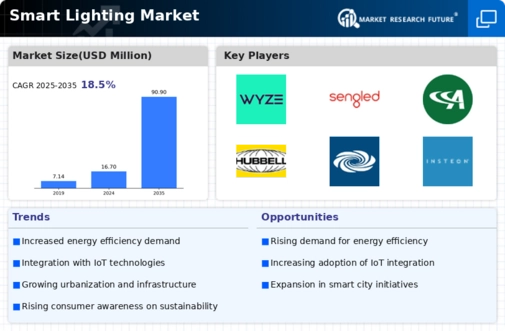
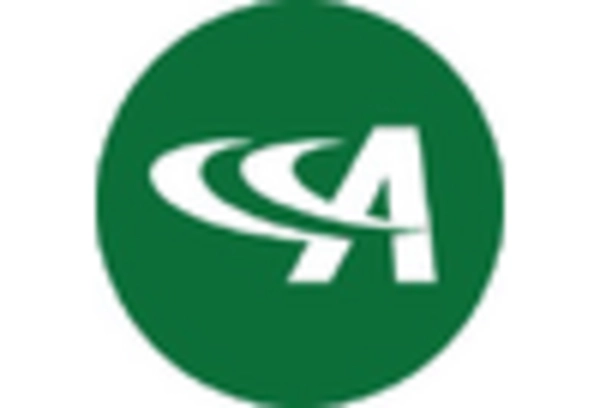
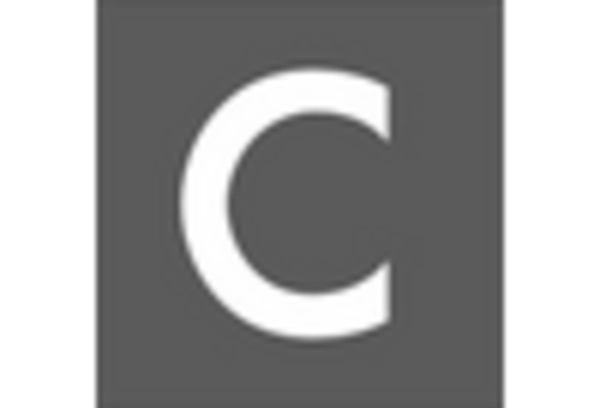
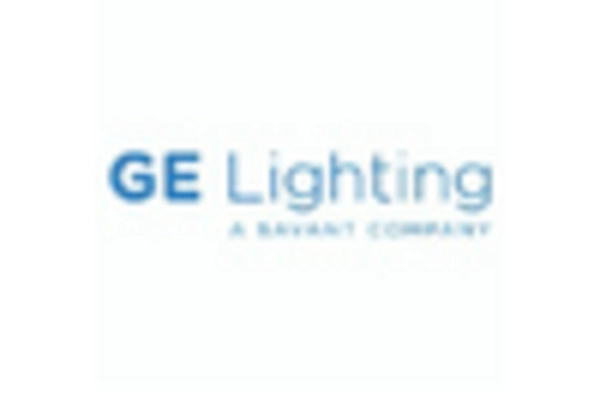
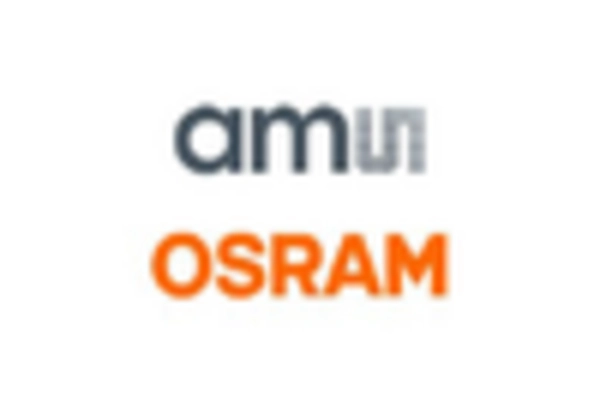
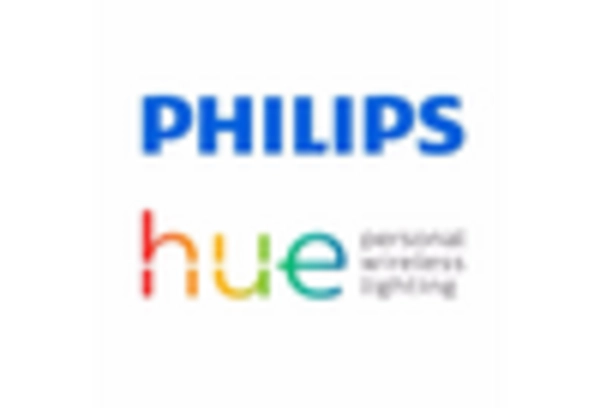










Leave a Comment